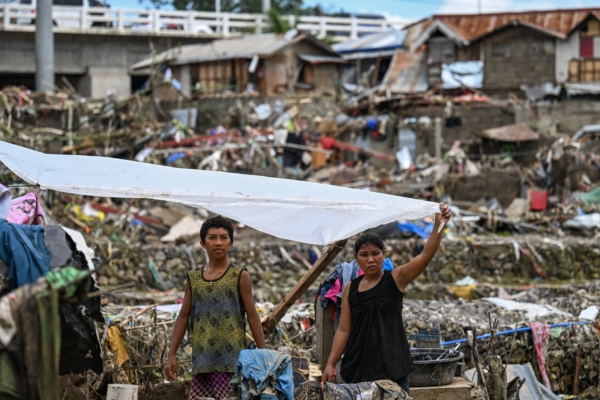On Tuesday, November 4th, Typhoon “Kalmaegi” made landfall in central Philippines, bringing heavy rain and triggering widespread flooding. Authorities reported that it has resulted in at least 66 deaths, including 6 military personnel, and 26 people missing, affecting over 700,000 people.
The Philippines Civil Defense Office stated on Wednesday, November 5th, that Typhoon Kalmaegi has caused dozens of flooding incidents nationwide, with the Cebu province, a popular tourist destination, being the hardest hit, with a confirmed death toll of 49. Additionally, the Philippine military confirmed on Tuesday that a military helicopter crashed during a rescue mission on Mindoro Island, resulting in the deaths of all 6 crew members onboard.
Kalmaegi first made landfall at midnight on Tuesday in Silago Town, Southern Leyte province. It then passed through the Visayas region, causing widespread flooding, with numerous cars, trucks, and even containers being swept away, forcing people to seek refuge on rooftops.
Meteorologists pointed out that within 24 hours before Kalmaegi hit, Cebu City received 183 millimeters of rainfall, significantly higher than the area’s average monthly rainfall of 131 millimeters.
Due to the severity of the disaster, the Cebu province government declared a state of calamity on Tuesday night. Furthermore, the National Disaster Risk Reduction and Management Council of the Philippines reported that 53 towns across the country have been declared under a state of calamity due to the significant impact of the disaster. This measure will allow local governments to access emergency funds and implement price controls on essential goods.
According to the Philippine Atmospheric, Geophysical and Astronomical Services Administration, as of 11 am on Wednesday, the center of the typhoon was located approximately 190 kilometers west of Coron Town, Palawan province, moving in a west-northwest direction at a speed of 20 kilometers per hour. It is expected to leave the Philippine Area of Responsibility by Wednesday night or early Thursday morning.

